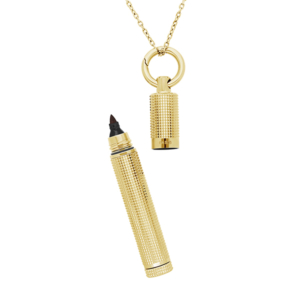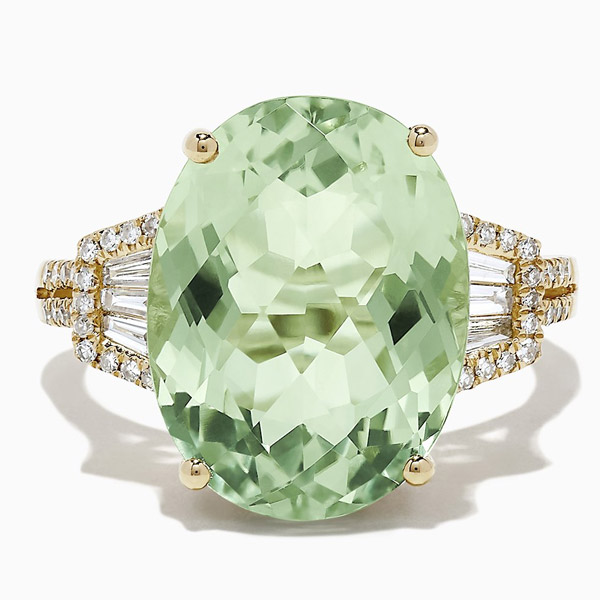
I was all set to do a roundup of purple amethyst jewels for February when I remembered: Wait a minute, why do purple when I can go green?
I got to thinking about how green quartz is arguably more versatile than its purple counterpart, how it goes with everything. It can be a standout gemstone on its own, or it can blend happily into a collection, its sort of minty green shade a lovely pairing in any season, and with almost any color.
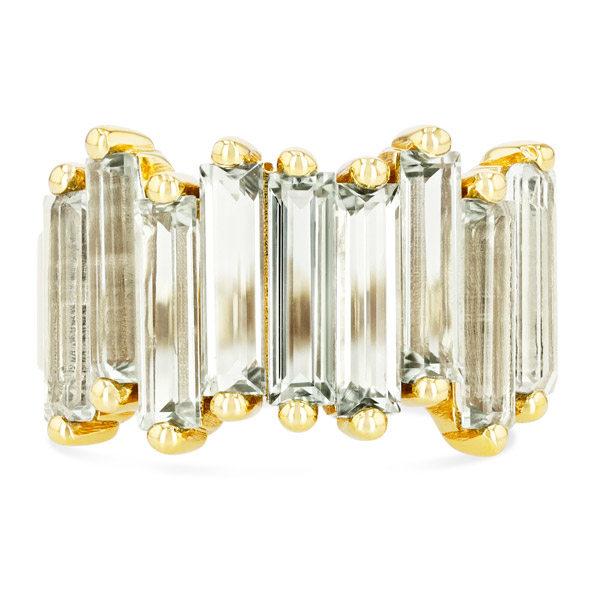
But the thing is, as green amethyst is a misnomer, is it even really a contender for the February birthstone title?
You won’t get a straightforward answer here; instead, let’s look to the Federal Trade Commission (FTC), of all places. The FTC’s guides to commercial practices for the jewelry, precious metals, and pewter industries contains specifications on how products shall be advertised to consumers, touching on green amethyst in particular. The guides state that the term green amethyst is a misrepresentation of a varietal name, and that “it is unfair or deceptive to mark or describe an industry product with the incorrect varietal name.” Doing so could result in fines or legal action.
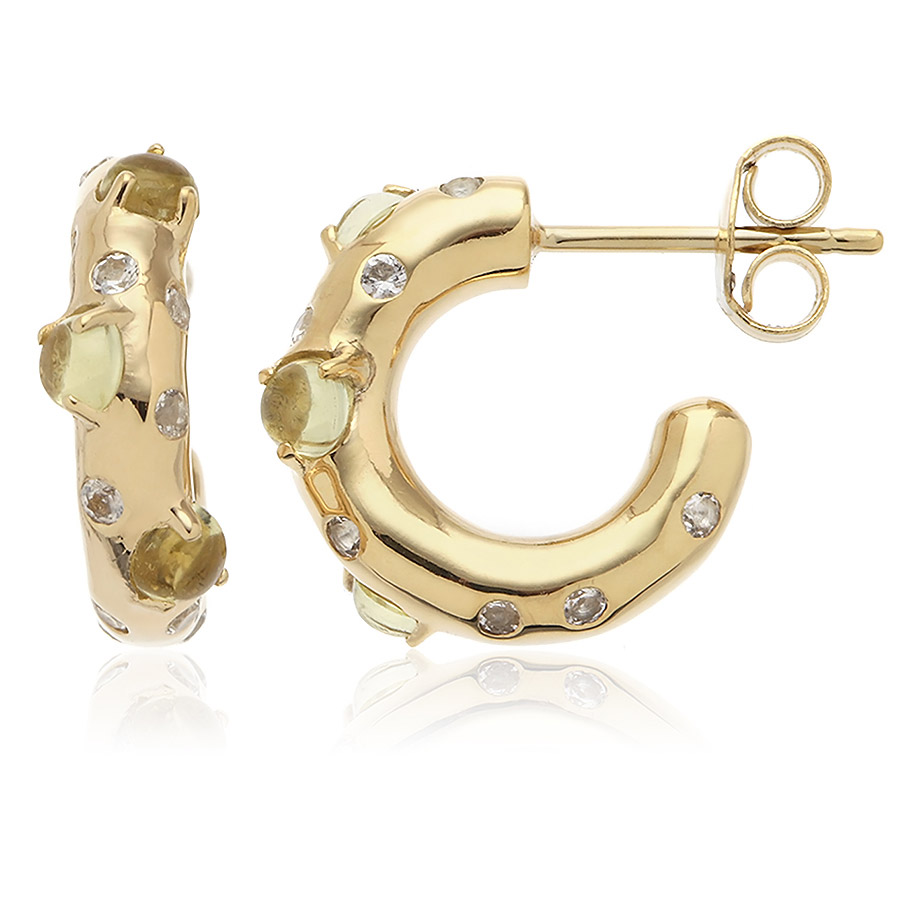
Because amethyst is a term that describes the purple variety of the stone (rather than the term purple quartz, which you could use, I guess), labeling this other variety green amethyst is like saying, “It’s a purple quartz except it’s green.” Doesn’t make much sense, right? The FTC also refers to another instance of misrepresentation that feels easier to digest: yellow emerald, which should instead be properly referred to as golden beryl. Because I’ve literally never heard the term yellow emerald, this one gets no pushback from me.
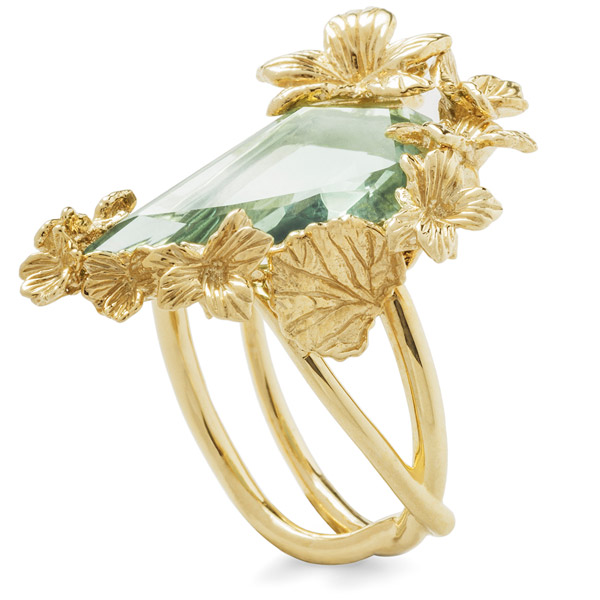
But breaking the green amethyst habit will be a harder go. I still see it labeled that way everywhere (including on many of the pieces here, whose descriptions I have changed for the purposes of this post), and I often refer to it that way myself. It just feels right—we know it, we love it. Purple and green quartz varieties feel so married under the moniker of amethyst that it’s hard to distinguish them as separate at all. But think about it this way: If a heat-treated amethyst (or, sometimes natural) renders a yellow quartz—or citrine—would you call it yellow amethyst? And furthermore, by that logic, you wouldn’t loop citrine into the same birthstone month as amethyst (it reigns over November), so why should prasiolite be any different?
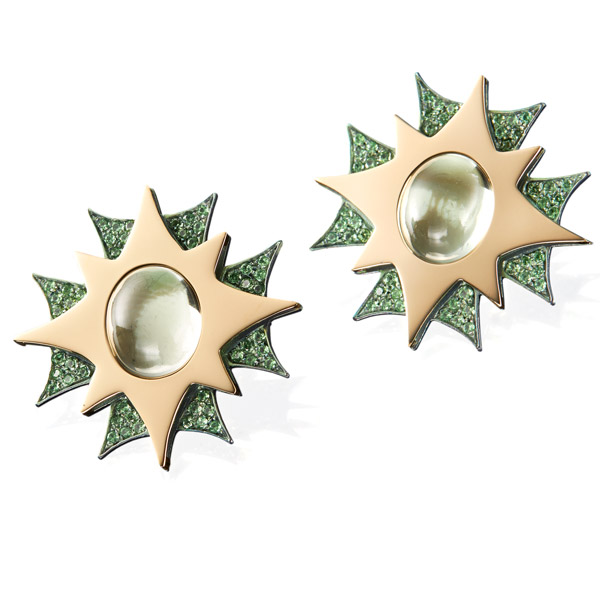
Still, this refreshing pastel gem, deserved of the birthstone crown or not, is a welcome sight as we await spring, and its minty essence works well in winter, too. Now is a good time to check that your labeling aligns with FTC guidelines—while this particular label is incredibly common and likely not all that often contested, you can just never be too careful (or precise).
Top: Ring in 14k yellow gold with green quartz and diamonds, $1,925; Effy Jewelry
- Subscribe to the JCK News Daily
- Subscribe to the JCK Special Report
- Follow JCK on Instagram: @jckmagazine
- Follow JCK on X: @jckmagazine
- Follow JCK on Facebook: @jckmagazine






